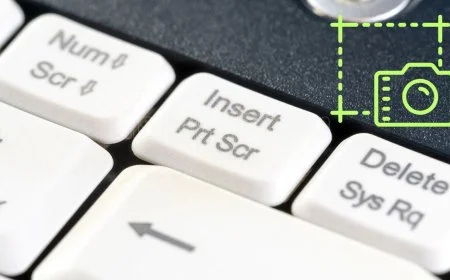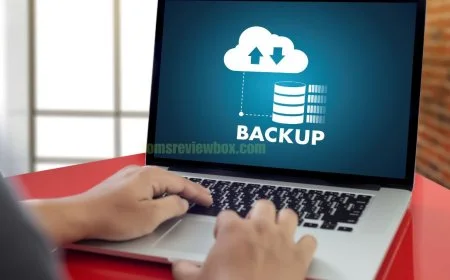Why is my Lenovo laptop so slow on Windows 10/11?
Discover effective solutions for "why is my Lenovo laptop so slow" with our expert tips tailored for Windows 10/11 users.

Wondering why your Lenovo laptop is so slow?
Slow laptops really crimp your style, don’t you think? Dusty fans and bloated software could be behind it. You’ll see some answers here.
Usually, you can use these fixes to speed up your device in just a few minutes. Perhaps a RAM upgrade or a clean-up of some software. Getting your laptop back to its former glory is a cinch.
Then, you’re more than ready!
By the end, you'll have a smoother, faster machine that's ready for anything.
Enough of this sluggishness, let’s put the pedal to the metal.
Ready to unlock peak performance?
Key Takeaways
-
By understanding the reasons behind slow performance in Lenovo laptops, you can tackle the issue effectively.
-
Common reasons for a sluggish Lenovo laptop include insufficient RAM, outdated software, and too many startup programs.
-
You'll often gain a speed boost for your laptop by upgrading its hardware, like adding more RAM or switching from a hard drive to an SSD.
-
Updating your operating system and software will keep things running smoothly.
-
Use built-in tools for troubleshooting and maintenance, like the Lenovo Vantage app, to help diagnose and fix issues.
-
Some tasks you do repeatedly, such as clearing the cache and disabling startup programs, will improve your laptop's performance as time goes on.
Why Is My Lenovo Laptop Slow
Common Causes of Sluggishness
Excess temporary files.
Chances are you won't even notice, but as you browse the web or use apps, your laptop gathers a bunch of temporary files. That storage can add up quickly!
These files accumulate over time, taking up valuable hard disk space and slowing things down. If you notice your Lenovo getting sluggish, it might be time to clear these out.
Regular clean-ups can help keep your system humming along.
Another thing to consider is background programs.
Loads of apps run in the background — usually, you don't even notice. It can be anything from system updates to chat apps.
While some of these are necessary, others merely hog resources. Look in your system tray, or bring up your task manager and see what’s running.
Closing unnecessary programs frees up memory and processor resources, making your laptop faster.
Now we haven’t talked about malware yet. That’s a sneaky culprit and can seriously degrade performance.
Viruses or spyware can run processes in the background, consuming your system’s resources. A good antivirus program is crucial to keeping your laptop both safe and running smoothly.
Regular scans can catch and remove any unwanted guests.
Finally, obsolete software and drivers are sometimes neglected but can cause slow performance.
Software updates typically include performance upgrades and bug fixes, so this is an important step.
Check for updates periodically to keep your laptop running optimally.
Hardware Limitations and Issues
When it comes to hardware, RAM is the big player.
Having less than 8GB of RAM makes your Lenovo slow. This is particularly evident when you attempt to run memory-hungry apps like video editors or games.
If your laptop is using virtual memory because there's not enough RAM, performance can really suffer.
Upgrading your RAM can actually have a noticeable difference, speeding up those heavy tasks.
Older hardware is another factor.
As software continues to advance, it needs ever more power to run smoothly. Your Lenovo will have a tough time running modern apps if it doesn’t include up-to-date components.
This is something to keep in mind if your laptop is a few years old.
Yet another issue is overheating can reduce performance.
If your laptop gets too hot, it will throttle down its performance to cool off. This can result in slowdowns and even crashes.
Make sure there’s ventilation for your laptop. If overheating persists, you may need to clean the fans or consider other cooling solutions.
Another point to consider is limited upgradeability.
Not all laptops are easy to upgrade, so you are limited by performance. Before you purchase a laptop, check how easy it is to upgrade the RAM or hard drive.
This can make a huge difference in how long your laptop lasts.
Software Problems and Conflicts
Software bugs happen, and they're subtle.
Sometimes a program may not work well with your system, and it will operate very slowly.
If an app is misbehaving, delete it and try installing it again, or search for a patch or update.
Compatibility issues between applications can also cause conflicts. Some programs just don’t like to play together, and when that happens, it can slow things down.
If your phone always crashes or slows down when you use some apps, look out for compatibility issues.
There’s also the annoyance of bloatware. These are pre-installed programs you don't need, but they still gobble up resources.
Removing or disabling these can free up system resources, giving your Lenovo a much-needed boost.
Finally, a fragmented hard drive can affect performance. When your files are all over the place on the drive, it takes your laptop longer to retrieve them.
Regular defragmentation keeps files organized, and load times go up.
Identify Reasons for Slow Performance
1. Check for Malware and Viruses
It’s time to get down and dirty with malware and viruses.
These sneaky little pests can slow down your Lenovo laptop without you even knowing.
Do this first thing, and then run a more comprehensive scan using good antivirus software.
This step’s crucial because some malware hides in your system, and you may not notice how your laptop acts.
You may notice strange behavior, such as programs freezing or unexpected shutdowns.
If the scan identifies any malware, get rid of it pronto so your laptop can regain its efficiency.
Make a habit to regularly schedule scans. That keeps your system secure and humming along like a well-tuned engine.
2. Analyze Startup Programs
Wondering why your Lenovo takes forever to boot up?
The culprit can be too many programs launching at startup. High CPU usage from these unnecessary programs can slow down the machine.
We’ll go ahead and open up the Task Manager here. Here, you can review and manage these startup programs.
Get rid of the non-essential ones — trust me, you’ll see the difference. Keep the important stuff up-front, so it’s all loaded fast.
This simple step does wonders, making boot time and general responsiveness much quicker.
Make a list of your startup programs so you can compare them after the changes. This way, you’ll easily see what’s working and what’s not!
3. Examine Hard Drive Space
Now, let’s talk hard drive space. It’s a really common issue and one that can slow things down.
Check how much space is available on your disk. If it's looking tight, begin removing unnecessary files and applications.
A disk cleanup increases your system performance by deleting temporary and junk files. They shouldn't slow you down but they should not be there either!
If speed is still an issue, consider upgrading to a Solid State Drive (SSD). It’s a game-changer with faster access speeds and reliability.
If you do, also watch your disk usage from the command line. Keeping on top of this prevents future slowdowns because you have low space.
4. Inspect System Updates
System updates are another part of the puzzle.
Ensure your Windows and all apps are up to date. Missing out on critical updates can affect your Lenovo’s stability and performance.
If automatic updates are causing issues while in use, you may disable them temporarily. Instead, use the manual approach to check for those important updates.
Check your update history to see if you have any troublesome installations. Sometimes, fixing these can address performance hiccups you’ve been experiencing.
5. Evaluate Background Applications
Let’s not overlook those background apps that can cause a significant slowdown. You’d be surprised how much they slow down your system performance. Use the Resource Monitor to identify hogging processes and close the ones you don’t need running. This frees up RAM resources and can enhance your overall system response time.
Focus on the applications that you truly need to keep your system running efficiently. Regularly reviewing these background tasks can help you spot bottlenecks and identify any inefficiency that may be contributing to a sluggish response.
If your computer is consistently maxing out its RAM, it may start relying on virtual memory, which is considerably slower. To mitigate this slow issue and improve performance, consider a RAM upgrade to ensure you meet the minimum memory requirements for your tasks.
Additionally, using tools like the disk cleanup utility can help remove system junk files that hog disk space. This optimization process can lead to a real performance boost, especially when dealing with heavy computation tasks or multiple applications running simultaneously.
Effective Solutions to Boost Speed
Optimize System Settings
We're going to change some system settings. You can try adjusting visual effects in Windows. Consider it like turning off the shiny animations that may look nice but take time.
Open up the Control Panel and click on “System and Security.” From there, select “System” to get to the “Advanced system settings” option. Click that, and under “Performance,” select “Adjust for best performance.
This will make your system run smoother, especially if you're dealing with lags.
Next, take a look at your power settings. By default, Windows may be set to conserve energy. You can flip it over to prioritize performance instead.
Click on “Control Panel,” then on “Power Options,” and choose “High Performance.” That way, your laptop prioritizes speed over energy conservation.
Don't sleep on disabling unnecessary Windows services. Sometimes, background services eat up resources without you even realizing it.
To manage these, type “services.msc” in the search bar and press Enter. Here, you can safely disable something like “Windows Search” or “Superfetch” if you never use them.
Lastly, use built-in optimization tools such as Windows' Disk Cleanup or Task Manager to shut down apps you don't require. These tools are your friends for maintaining that lean mean system.
Keep your Windows up-to-date because updates can address bugs and help things run more smoothly.
Upgrade Hardware Components
Thinking about hardware? Adding more RAM is a good step.
If you’re running Windows 10 (64-bit), aim for at least 4 GB of RAM. That gives you a little more breathing room for multitasking.
Right-click on “This PC” and click “Properties” to check your current capacity. If you see you’re low, consider an upgrade.
Switching to an SSD can be a game-changer. These drives are faster than the legacy HDDs. Indeed, you might see speed increases of up to 30%.
Cloning your existing hard drive to an SSD can significantly reduce loading times for apps and files.
Just make sure your laptop is compatible with the SSD you're considering. You don’t want to buy something that doesn’t fit!
Plan for upgrades down the line.
If you run demanding software, a laptop that supports more RAM will improve performance.
Space for a second SSD will help keep everything running well for years to come.
Clear Unnecessary Files and Data
Clearing the clutter.
Disk cleanup utilities are needed. You can even use the built-in Windows Disk Cleanup. Just type it in the search bar and let it find junk files that are sucking up space.
It's a simple way to reclaim gigabytes of storage.
Delete apps you're not actually using.
Head to “Control Panel,” then “Programs and Features,” and decide what you want to keep or toss.
Fewer apps mean less clutter and faster execution.
Don’t forget to empty the recycle bin regularly. Deleted files just sit there, taking up space.
It’s a simple step, but you’d be surprised how often it’s overlooked.
You can also organize your files and folders to keep things tidy.
Make clear folders for work, photos, and personal items.
It helps you find what you need faster and keeps your storage system efficient.
Use Performance-Enhancing Software
Sometimes, all you need is some software to work wonders.
Lightweight optimization tools such as CCleaner can wipe out temporary files and brush up registry entries.
They don’t take up much space, and they are pretty handy.
For hard drives, especially if you're not on SSD yet, disk defragmentation utilities can help.
It reorganizes fragmented data so that your system can find files more easily.
Look out for antivirus that includes performance features. They scan for malware that might be slowing you down.
I like Malwarebytes or Bitdefender, for example. They keep your system safe and speedy.
Finally, schedule regular maintenance tasks for it.
Use Task Scheduler to set up automated disk cleanups or defraggers in Windows. It’s a set-it-and-forget-it kind of thing where your laptop will stay optimized without necessarily being kept under constant surveillance.
Troubleshoot Lenovo Laptop Issues
Resolve Software Conflicts
Let’s get one thing straight: your Lenovo laptop may be running slow due to conflicting applications.
When two programs don’t play nice with one another, it’s like having two people trying to talk at the same time; nothing gets through properly.
What can you do about it?
Start by isolating which apps might be the problem. Look for error messages or strange symptoms when you're using your laptop.
Second, uninstall or disable the offending software. You can easily do this using the Control Panel.
You can right-click the app in your taskbar and select "End Task.
If you are not sure which ones to take out, begin deactivating them one by one. Check to see if your laptop speeds up after each change.
Updating your apps is yet another excellent way to keep things running like clockwork.
Sometimes, old software doesn’t play nice with newer operating systems.
Visit the app’s official website or the built-in update feature.
After making these changes, monitor how your laptop performs.
Does it run smoother? Any crashes?
Monitoring checks whether you fixed the problem or if there’s still more sleuthing to be done.
Address Hardware Malfunctions
Now, let’s take a look at hardware. A slow laptop isn't just about the software.
Verify your Lenovo's physical hardware. Examine it for wear and tear, broken parts, or overheating components. Over time, dust and debris can also sneak in and cause problems.
Testing your RAM and hard drives with diagnostic tools is a good move. Programs like Windows Memory Diagnostic or third-party tools can help you spot errors.
If you discover any bad RAM sticks or failing hard drives, replacing them can work wonders for performance.
Upgrading your RAM, for instance, can increase system responsiveness by as much as 50%!
Let’s be honest — not everyone is down to tinker with hardware.
If it becomes too convoluted, or you’re unsure how to approach it, you might want to bring in a professional to help.
The certified technicians can tackle complex problems and provide your laptop with the tender loving care it deserves.
Update Drivers and Firmware
Updating drivers and firmware is like a tune-up for your laptop.
Drivers are translators between your hardware and software, so it’s important to keep them up to date.
Periodic checks with Lenovo's support site or its useful System Update tool are recommended. This can improve hardware compatibility and sort out any quirks.
Firmware updates are just as critical. They help the stability of the system and even the overall performance, stopping random glitches.
These updates are typically located on the manufacturer's website. Ascertain that all drivers are compatible with your operating system version to prevent problems.
Keep in mind that too many background processes result in lag.
If your CPU usage is high due to resource-heavy tasks, optimizing software or upgrading hardware like RAM can help.
Optimize Startup Programs
Finally, too many programs launching at startup can significantly contribute to a sluggish response on your Lenovo laptop. By checking the Task Manager or utilizing System Configuration, you can identify unnecessary startup items that hog resources. Turning off these applications should lead to a noticeable performance boost.
Additionally, running ActiveCare serves as an effective tool to scan for possible causes of slow issues and repair problems, ultimately enhancing your computer's performance. This proactive approach can help optimize drives and tackle issues related to high disk usage, ensuring a smoother experience.
By addressing these factors, you can minimize system slowdown and improve overall efficiency. Regular maintenance, including utilizing disk cleanup utilities and monitoring application usage, will keep your laptop running smoothly, allowing you to enjoy a more efficient user experience while performing important tasks.
Improve Lenovo Computer Performance
Adjust Power Settings
Okay, let’s get into power settings.
Power settings on your Lenovo laptop can affect its speed by a significant amount, particularly when multitasking.
Here’s the deal: You want to change your power plan. Going from a standard or battery-saving mode to a performance-oriented one.
This tweak gives your laptop more juice to work with, so apps run smoother.
You can also adjust advanced power settings. Here, you can fine-tune how your CPU and memory are used.
It’s like giving your computer a pep talk, telling it to push harder when you need it to.
You want to disable sleep mode while performing heavy tasks, such as video editing or gaming. This keeps your laptop awake and responsive.
Regularly check these settings to see if they still meet your needs. This is particularly important if your usage habits shift.
Enable High-Performance Mode
High-performance mode is your laptop's secret weapon for when you really need it to hustle. You can enable this mode in your power settings.
It’s about saying to your laptop, “Okay, it is trained on data until October 2023, and this setting allows your machine to perform optimally during resource-intensive tasks.
So, whether you're video editing or running major software, high-performance mode has you covered.
There's a catch — using this mode heats up your laptop. Monitor those system temps to not run too hot. You may need a cooling pad or simply take breaks to allow it to cool down.
Once you finish those difficult tasks, shift back into balanced mode. This will save energy and prolong your battery life.
It’s just about using the right amount of power at the right time.
Regularly Clean and Maintain Device
No, routine cleaning isn’t just for cleanliness; it’s how your Lenovo laptop will keep zipping along.
Dust is the enemy here, clogging vents and fans, which can slow things down and cause overheating.
Schedule regular spiff-ups to keep things tidy. Blow out dust with a can of compressed air from the vents and fans.
Create a checklist for maintenance. This may include checking for software updates or scanning for viruses with Windows Security.
The more time you spend keeping your system free of malware, the faster it will run.
It's like a spa day for your laptop, making sure every part is working hard.
Do yourself a favor and educate yourself on why this is important.
Regular maintenance not only improves performance but also increases the lifespan of the device.
Remember, a clean machine is a happy machine.
Conclusion
Stuck with a sluggish Lenovo laptop? Don’t panic. We’ve got you covered.
We've covered the reasons, which range from system overload to old software. You’ve been taught that clutter and background apps slow you down.
Solutions? Simple things like cleaning up files and updating drivers. Give them a try and see how things change.
Give the laptop a clean slate by junk-clearing and setting adjustments.
Simple actions like this can seem small, but they go a long way.
Check Lenovo's support for more tips and tricks.
If your laptop is slow, don’t let that stop you.
Dig into these solutions, and watch your productivity take off.
Yes, you are capable of doing this.
Frequently Asked Questions
Why is my Lenovo laptop running slow?
Your Lenovo laptop might experience sluggish response times for several reasons, such as limited RAM resources, disk fragmentation, or outdated software. Additionally, overheating and malicious software can contribute to a system slowdown.
How can I improve my Lenovo laptop's performance?
Upgrade RAM, clean out your hard drive, update your software, and make sure you provide good ventilation. Running antivirus scans regularly also helps.
What are common reasons for Lenovo laptops slowing down?
The most common reasons for a sluggish response in computers are low RAM, too many startup programs, outdated drivers, and excess heat, while malware and a full hard disk drive can also cause significant slowdowns.
How do I troubleshoot slow performance on my Lenovo laptop?
You check Task Manager for resource-heavy programs, spot bottlenecks, and consider running antivirus scans. Additionally, updating drivers and optimizing drives may help if sluggish responses continue.
Can upgrading hardware speed up my Lenovo laptop?
Upgrading RAM or switching to a new SSD can significantly enhance your computer's performance, addressing slow issues and improving multitasking while shortening boot times.
Is overheating a reason for my Lenovo laptop's slowness?
Absolutely, we see that with overheating, which can lead to a sluggish response in your system. To avoid this slow issue, make sure the fan is properly ventilated and regularly clean dust from the vents.
Does software update affect Lenovo laptop speed?
Yes, outdated software can contribute to a sluggish response on your laptop. Regular updates are essential to optimize performance and prevent slow issues, ensuring it runs smoothly and securely.
What's Your Reaction?







































![MacBook Pro M5: All the features and specs you need to know [LEAKS REVEALED]](https://tomsreviewbox.com/uploads/images/202502/image_430x256_67bd6d7cd7562.jpg)



























